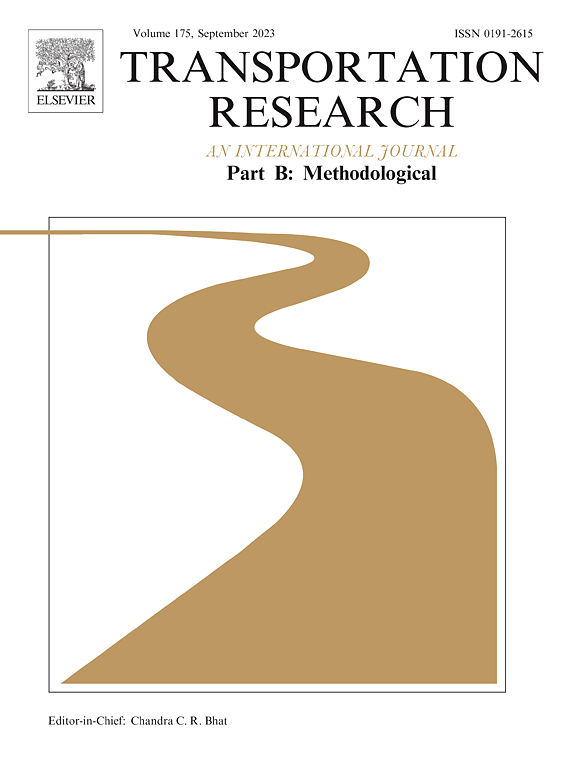东西部铁路放松管制:组织结构模式对空高铁竞争的影响
IF 6.3
1区 工程技术
Q1 ECONOMICS
引用次数: 0
摘要
在西方和东方放松铁路管制的背景下,引入竞争(通过开放获取)铁路可以通过不同的组织结构来实现。本文首次运用博弈论方法,对完全分离、控股和完全整合三种组织结构进行建模,并考察其对航空高铁竞争的影响。从分析和数字上(基于京沪高铁)来看,对于以利润为导向的高铁基础设施,控股结构有助于高铁最有效地与航空竞争,为高铁竞争对手和高铁行业带来最高的利润。与其他结构相比,完全一体化结构为高铁在位者带来了最高的市场份额和高铁消费者剩余,从而导致对高铁竞争对手的掠夺性定价。此外,一体化还会产生强大的经济激励,促使现有企业实施限价以驱逐进入者。这些结果解释了为什么中国市场的铁路放松管制落后于欧洲的困惑。进一步的敏感性分析表明,在以福利为导向的监管应与以利润为导向的结构(如完全分离)相结合的情况下,准入收费制度的监管对组织结构的影响有影响。一般来说,每种结构都有利弊,不同的权威目标(促进模式转变、增加竞争、提高福利等)和地位是选择最优结构的前提。本文章由计算机程序翻译,如有差异,请以英文原文为准。
Railway deregulation in the west and east: The impacts of organizational structure patterns on air-HSRs competition
In the context of railway deregulation in the West and East, introducing competition (through open access) to railways can be achieved via different organizational structures. Using game theoretic method, this is the first attempt to model three organizational structures, namely, full separation, holding, and full integration, and to investigate their impacts on air-HSRs competition. Analytically and numerically (based on the Beijing-Shanghai route), for a profit-oriented HSR infrastructure, a holding structure helps HSR to compete most effectively with air, delivering the highest profits for the HSR competitor and the HSR industry. Compared with other structures, a full integration structure produces the highest market share for the HSR incumbent and HSR consumer surplus, resulting in predatory pricing against the HSR competitor. Moreover, integration leads to strong economic incentives for the incumbent to implement limit pricing to dislodge entry. These results provide an elucidation for the puzzle of why railway deregulation in the Chinese market has lagged compared with that in Europe. Further sensitivity analysis shows that the regulation of the access charging regime has an effect on the impact of the organizational structure in which a welfare-oriented regulation should be coupled with a profit-oriented structure such as full separation. In general, each structure has pros and cons, and different authority goals (promote modal shift, increase competition, improve welfare, etc.) and statuses serve as a prerequisite for choosing the optimal structure.
求助全文
通过发布文献求助,成功后即可免费获取论文全文。
去求助
来源期刊
CiteScore
12.40
自引率
8.80%
发文量
143
审稿时长
14.1 weeks
期刊介绍:
Transportation Research: Part B publishes papers on all methodological aspects of the subject, particularly those that require mathematical analysis. The general theme of the journal is the development and solution of problems that are adequately motivated to deal with important aspects of the design and/or analysis of transportation systems. Areas covered include: traffic flow; design and analysis of transportation networks; control and scheduling; optimization; queuing theory; logistics; supply chains; development and application of statistical, econometric and mathematical models to address transportation problems; cost models; pricing and/or investment; traveler or shipper behavior; cost-benefit methodologies.

 求助内容:
求助内容: 应助结果提醒方式:
应助结果提醒方式:


